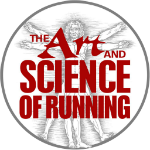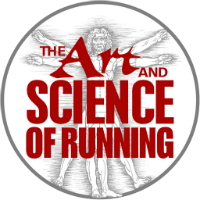Alex was in the area attending and presenting at two biomechanics conferences – one specifically for footwear and the other for biomechanics in general.
His presentations can be found through the links below:
Use of Wearable Sensors for Measurement of Spatiotemporal Variables During Marathon Race Poster
Use of Wearable Sensors for Measurement of Spatiotemporal Variables During Marathon Race Abstract
Exploring Kinematic Asymmetry by Means of Wearable Sensors During Marathon Race Poster
Exploring KinematicAsymmetry by Means of a Wearable Sensors During Marathon Race Abstract
Alex describes the work he does using wearable technologies to determine how the body responds to certain types of footwear, terrain, etc. Whereas in the past one had to do all of the testing in a lab, with advancements in technology he can now measure 4D movement of an individual with incredible accuracy to determine how to improve footwear development.
Jacob plans to use RunScribe sensors in training and Alex and Malc will review the data to determine which shoe models work best for him and what injury prevention protocols to follow.
Malc uses wearable technology to help runners from all over the avoid injury.
Alex uses wearable technology specifically to inform footwear development and will be working with Jacob and other VF athletes (The North Face and Altra) to gather training and racing data to hopefully create better shoes to meet their training and racing demands.
Wearable technology has been overly simplistic in the past, but RunScribe now has the ability to look at up to 35 – 40 parameters.
Recently, Alex has been comparing the Nike Vaporfly 4% Flyknit shoe and the Altra Escalante Racer. His posters and presentations (above) show some of his findings.
Alex suggests that the gains made by the 4% are not simply due to the carbon plate, but primarily due to the newer Pbax foam compound.
As an undergraduate and graduate student and the University of New Hampshire, Alex studied zero drop technology and how the body responds to it. In fact, his department developed a transition protocol from traditional shoes to zero drop over the course of several weeks.
Alex describes the process of shoe development and modification.
A team of developers puts the shoe together, creates prototypes, test prototypes, and gets feedback from wear testers, but to make even minor modifications comes at a great cost and generally takes time.
All of this and more in Episode 4 of the Art and Science of Running Podcast.
Intro and outro music by Dallin Puzey, GOIN 4 A WALK.
Please listen, subscribe and rate this podcast on Apple Podcasts, Spotify, Stitcher, YouTube, or wherever you listen to podcasts.
Please follow us on Twitter, Instagram, and Facebook and let us know what you’d like us to discuss in future episodes.
Podcast: Play in new window | Download
Subscribe: Google Podcasts | RSS




